August 19-21, 2011
Both Sides and The Center was a summer literary festival at the MAK Center for Art and Architecture at the Schindler House on North Kings Road in West Hollywood, California. Inspired by the architecture of R.M. Schindler’s House and Studio (1922), Both Sides and The Center featured literary readings and performances enacting various levels of proximity, intimacy, and distance.
Both Sides and The Center takes it name from a line in Gertrude Stein’s “Rooms,” Tender Buttons. The event was curated by Amina Cain and Teresa Carmody, and was supported through a Cultural Resource Development Grant from the City of West Hollywood and by Poets & Writers, Inc. through a grant it has received from The James Irvine Foundation.
Participating writers and artists: John Beer, Michael du Plessis, Bhanu Kapil, Jen Hofer & Myriam Moscona, Vanessa Place & Kim Rosenfield, Amarnath Ravva, Sophie Robinson, and Anna Joy Springer.
MAK Center for Art and Architecture at the Schindler House
835 North Kings Road
West Hollywood, CA 90069-4509
Suggested donation: $7 each night (no one will be turned away)
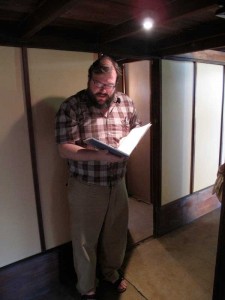
Schedule of Events
Friday, 19 August 2011, 7-9 p.m.
Opening reading & reception.
Saturday, 20 August 2011, 5-9 p.m.
Open-house: Participating writers will perform work that considers Schindler’s architecture and the unique ways in which the house commingles inside and outside spaces. Consider: the physicality of space, house as stage, voyeurism, private as public, the strangeness in the familiar and the brutal nature of domesticity.
John Beer, Peripatetics
5:00; 6:00; 7:00; 8:00 (15-20 minutes)
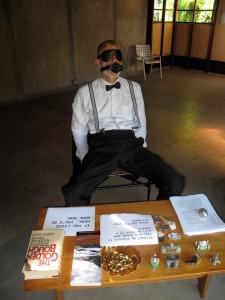
Michael du Plessis, The Twitch of the Tablescape (A Comedy of Manners)
5:00–9:00 (duration)
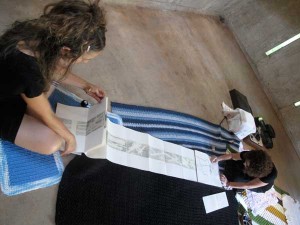
Jen Hofer & Myriam Moscona, la casa por la ventana / past the open window
5:05 – 5:25; 6:06 – 6:26; 7:07 – 7:27; 8:08 – 8:28 (20 minutes)
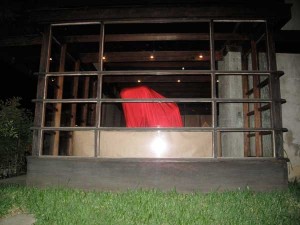
Bhanu Kapil, Schizophrene [Remix]
8:00-9:00 (1 hour)
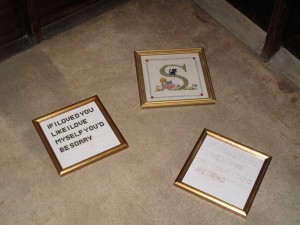 Vanessa Place & Kim Rosenfield, SCUM 1976 (2011)
Vanessa Place & Kim Rosenfield, SCUM 1976 (2011)
5:00-9:00 (duration)
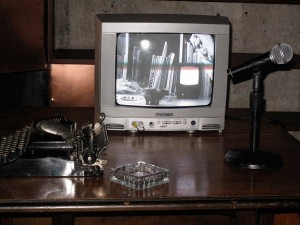
Sophie Robinson, the institute of our love in disrepair
5:00-9:00 (duration)
Amarnath Ravva, This Movement is Our Own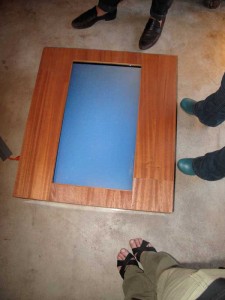
5:00–9:00 (duration)
Anna Joy Springer, Inside Voice Oracle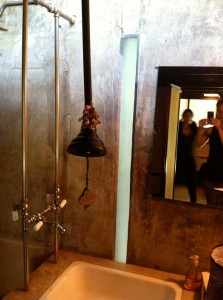
5:30-7:00 (performance for 1-2, 2-10 minutes)
About the Participants:
John Beer: A Chicago resident, John Beer is the author of the poetry collection The Waste Land and Other Poems (2010). Associative and imaginative, his work has been compared to that of John Ashbery. Poet Lewis Warsh wrote that The Waste Land and Other Poems “embraces and distills ‘the bad dream’ and all ‘the muck’ of the recent past, but the momentum of this book is full speed ahead.” Beer’s criticism has appeared in Verse, the Denver Quarterly, Chicago Review, and other magazines. He is a theater columnist for Time Out Chicago.
Michael du Plessis teaches Comparative Literature at the University of Southern California, has published reviews and articles and a poetry chapbook, Songs Dead Soldiers Sing (2008, Transparent Tigers Press). His first novel, The Memoirs of JonBenet by Kathy Acker, was published by Les Figues in 2012.
Jen Hofer is a Los Angeles-based poet, translator, interpreter, teacher, knitter, book-maker, public letter-writer, and urban cyclist. Her most recent books are the homemade chapbook Lead & Tether (Dusie Kollektiv, 2011); Ivory Black, a translation of Negro marfil by Myriam Moscona (Les Figues Press, 2011); a series of anti-war-manifesto poems titled one (Palm Press, 2009); sexoPUROsexoVELOZ and Septiembre, a translation from Dolores Dorantes by Dolores Dorantes (Counterpath Press and Kenning Editions, 2008); The Route, a collaboration with Patrick Durgin (Atelos, 2008); and lip wolf, a translation of lobo de labio by Laura Solórzano (Action Books, 2007). Recent poems and translations have appeared in Aufgabe, Mandorla, Or, out of nothing, and TRY. She teaches at CalArts, Goddard College, and Otis College. She also works nationally and locally as a social justice interpreter.
Bhanu Kapil is a British writer of Indian origin who now lives in Colorado, where she teaches at The Jack Kerouac School of Disembodied Poetics. Her most recent books of experimental writing are humanimal [a project for future children] (Kelsey Street Press, 2009) and Schizophrene (Nightboat Books, 2011).
Myriam Moscona is from Mexico, of Bulgarian Sephardic descent. She is the author of nine books, from Ultimo jardín (1983) to De par en par (2009). Two of her published books are outside the realm of poetry, yet remain connected to poetry: De frente y de perfil (literary portraits of 75 Mexican poets) and De par en par, which each explores the phenomenon of poetry beyond its traditional construction. Moscona has received numerous awards, including the Premio de Poesía Aguascalientes and the Premio Nacional de Traducción; she is a grantee of the Sistema Nacional de Creadores de Arte, and she was awarded a grant from the Guggenheim Foundation.
Vanessa Place: Of Vanessa Place and Robert Fitterman’s Notes on Conceptualisms, Mary Kelly said, “I learned more about the impact of conceptualism on artists and writers than I had from reading so-called canonical works on the subject.” Kenneth Goldsmith has called Vanessa Place’s work “arguably the most challenging, complex and controversial literature being written today.” Place writes poetry, prose and art criticism; she is also a criminal lawyer and co-director of Les Figues Press. Author of two novels, seven books of poetry, and a nonfiction book on rape, law and culture, Place’s most recent work is available in French as Exposé des Faits, in English as Statement of Facts, and in English/German as Die Dichtkunst.
Amarnath Ravva has a forthcoming chapbook Airline Music (Insert Press/Parrot Series) and was recently published in Indivisible: An Anthology of Contemporary South Asian American Poetry. He’s currently working on a book about early botanical expeditions called The Glass House.
Sophie Robinson’s work has been published in numerous anthologies including Infinite Difference: Other Poetries by UK Women Poets (Shearsman, 2010), Voice Recognition: 21 Poets for the 21st Century(Bloodaxe, 2009) and The Reality Street Book of Sonnets (Reality Street, 2008). Her first book, a, was published by Les Figues Press in 2009. She is currently completing a practice-based PhD in Contemporary Poetry and Sexuality, at Royal Holloway in London and is the 2011 Poet in Residence at the V&A.
Kim Rosenfield is a poet and psychotherapist. She is the author of Good Morning—Midnight— (Roof Books 2001), which was named Small Press Traffic’s Book of the Year in 2002, Tràma (Krupskaya 2004), and re: evolution (Les Figues Press 2009). Rosenfield has published and performed extensively in the U.S. and in Europe. She has collaborated with visual artists Jean Foos, Cheryl Donegan, Yedda Morrison, and with choreographer Sally Silvers. Rosenfield lives and works in New York City.
Anna Joy Springer is a prose writer and visual artist. Formerly a singer in the Bay Area bands, Blatz, The Gr’ups, and Cypher in the Snow, she has toured the United States and Europe as a wild feminist punk performer; she has also toured with the all-women spoken word extravaganza, Sister Spit. She is author of the illustrated novella The Birdwisher (Birds of Lace), The Vicious Red Relic, Love (Jaded Ibis, 2011) and a graphic narrative, In An Egg, forthcoming. She received her MFA in Literary Arts from Brown University in 2002, and she is an Assistant Professor of Literature at University of California, San Diego.
About the R.M. Schindler and MAK Center Schindler House: R.M. Schindler (1887-1953) was born in Vienna, where he studied under architects Otto Wagner and Adolf Loos. Inspired by Frank Lloyd Wright’s 1910 Wasmuth portfolio, he came to Chicago in 1914 and began to work for Wright in 1918. Wright sent him to Los Angeles in 1920 to supervise the construction of the Hollyhock House for Aline Barnsdall. Schindler established his practice there in 1922 with his own Kings Road House — a house designed as live-work space for two couples with a shared kitchen and an apartment for guests. Schindler’s work focused on the integration of interior space and exterior space using complex interlocking volumes and strongly articulated sections. He designed over 400 projects, 150 of which were built during his career. These consisted largely of low-cost single family houses for progressive clients. Although the materials and vocabulary of Schindler’s work changed during the span of his career, his principles of design and spatial characteristics were consistent throughout his work. This is true even as his spatial ideas evolved in his late work, including the translucent houses of the mid-1940s to early-1950s. —Kathryn Smith, architecture historian and author of Schindler House
Comments are closed.